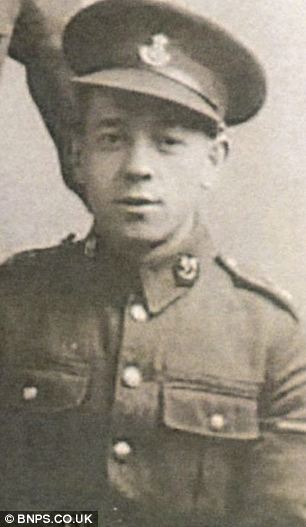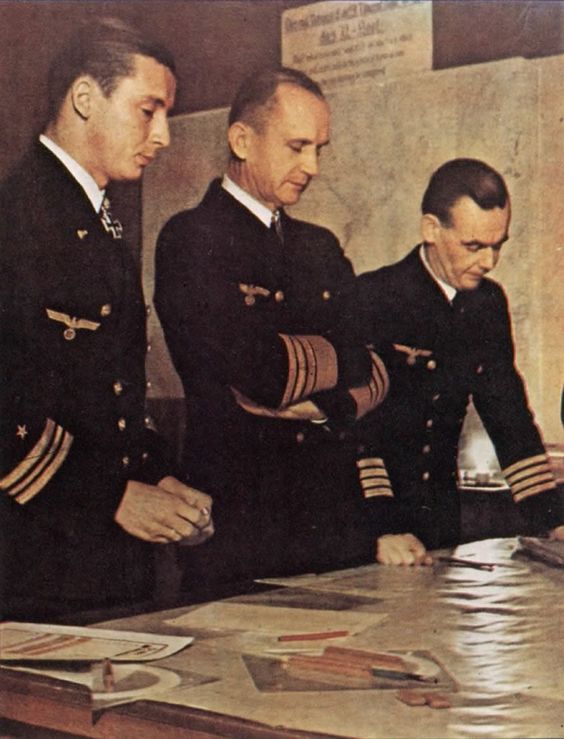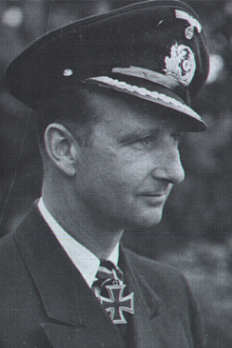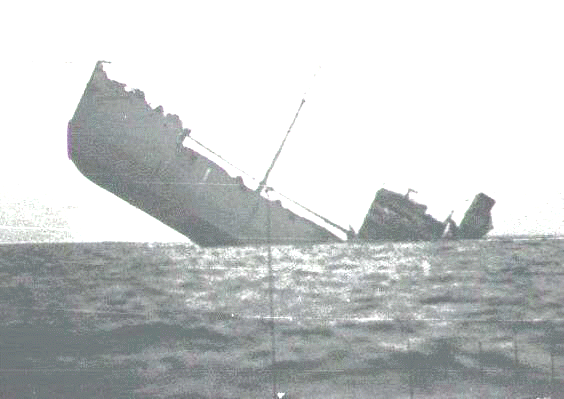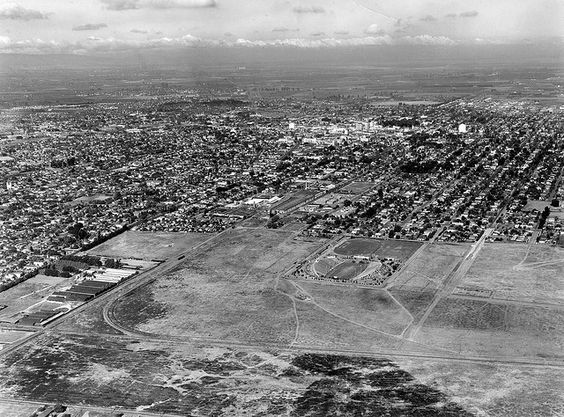Wednesday 4 June 1941
 |
| Babe Ruth attends the open casket funeral of Lou Gehrig. June 4, 1941. |
The Japanese Ambassador in Baghdad, Miyazaki, sends his counterpart in Ankara, Turkey a cable reporting the British takeover in Iraq. The Turkish ambassador, Kurihara, sends Tokyo a blunt message:
Unless some direct and summary measures are taken by Germany and Italy in following up this recent incident, it is feared that the whole Arabian movement will be severely hampered in its development. At this time, when it is thought that the Iraqi oil field pipeline and the railroad line connecting this city with Basra has been destroyed, British interests chiefly lie in the Habbaniya base which serves as a point in air and land transport from Trans-Jordan. Inasmuch as there are large oil reserves maintained in underground reservoirs and other subterranean facilities, please do your very utmost to have the German and Italian authorities bomb this base immediately.The Germans and Italians, however, no longer have any airplanes with the ability to bomb targets in Iraq.
Four Luftwaffe Heinkel He 111s of III./KG 27 bomb the Bristol area during the night, around 02:30 on the 4th. The targets are airfields and aircraft factories at Cheltenham and Bristol. The Germans bomb some buildings and destroy a Gloster plane on the ground. The Luftwaffe loses a Junkers Ju 88C in a separate intruder mission when it flies into a hill at Skelder Moor near Whitby just after midnight - all three crew perish.
After dark, the Luftwaffe attacks the Midlands and Medway areas. These attacks do not cause much damage, the bombs falling on the undeveloped ground.
RAF Fighter Command conducts Roadstead operations over occupied France.
There is fighter action over Folkestone. Feldwebel Janke and Fw. Helmut Jürgens of IV./JG 51 record claims.
Unteroffizier Heinrich Rühl of 1./JG 53 goes missing in Bf 109 F-2 "Black 3" (W.Nr. 6707) near Dover following aerial combat with Spitfire fighters (he apparently collides with a Spitfire). Rühl has five victories. This is Rühl's second time in the Channel, the first having been on 2 September 1940. In the earlier instance, Rühl was picked up by a Dornier Do-18 rescue plane, but this time he is not found.
The British record in the British Home Security Situation Report that for the week ending at 06:00 on 4 June 1941, there were about 178 deaths due to the Blitz, with 185 seriously injured.
 |
| New Castle News, New Castle, Pennsylvania, 4 June 1941. |
East African Campaign: Nigerian 23rd Infantry Brigade, advancing south from Addis Ababa, begins crossing the Omo at Abalti in Galla-Sidamo.
Gideon Force is disbanded. Orde Wingate is reduced in rank to that of major. He leaves for Cairo, Egypt. The reduction in rank may be related to friction he has had with higher British authorities regarding decorations and back pay for his men. Wingate is very put out by his peremptory treatment - he is not even given leave to say goodbye to his comrade in the jungle, Emperor Haile Selassie - and he determines to write an angry report about his experiences and the British officers who have obstructed his efforts on behalf of Abyssinian freedom. At this time, Wingate already may be infected with malaria, though he does not yet show symptoms.
 |
| June 4, 1941: Lou Gehrig's funeral/members of the High School of Commerce bow their heads with their gloves and caps in hands and pay respect to their hero. |
- 8923-ton tanker Gedania (captured by ocean boarding vessel Marsdale, renamed Empire Garden for British use);
- 4104 ton supply ship Gonzenheim (scuttled by its crew when intercepted by the battleship HMS Nelson);
- 9849-ton tanker Esso Hamburg (scuttled by its crew when intercepted by the heavy cruiser HMS London)
There are 63 survivors from the Gorzenheim and 87 from the Esso Hamburg. Basically, nobody dies during these events, but the German ability to supply U-boats and surface craft in the Atlantic to extend their operations is severely damaged. These sinkings and seizures cut the remaining number of Kriegsmarine supply ships almost in half.
U-101 (Kptlt. Ernst Mengersen), on its 8th patrol out of Lorient and on patrol in the mid-Atlantic west of Brest, at 05:03 torpedoes and sinks 5271-ton British freighter Trecarrell. The encounter is a little unusual because U-101 rams Trecarrell at 06:40 in the bow to hasten its sinking. There are four deaths and 43 survivors. It is not a happy day on U-101, though, because it loses a crewman, Matrosenobergefreiter Horst Jackl, overboard.
The Luftwaffe attacks Convoy WN 36. It bombs and sinks 3911-ton British freighter Queensbury. There are 11 deaths, the entire crew.
British 2879-ton suction dredger Robert Hughes hits a mine and sinks at the mouth of the Lagos River. This was one of the mines laid by U-69 (Kptlt. Jost Metzler) recently. There are 14 deaths and 17 survivors.
Dutch minelayer Van Meerlant hits a mine and sinks in the Thames Estuary off the Isle of Sheppey, Kent. There are three deaths and one crewman is wounded.
Convoy OG-64 departs from Liverpool bound for Gibraltar, Convoy HG-64 departs from Gibraltar bound for Liverpool.
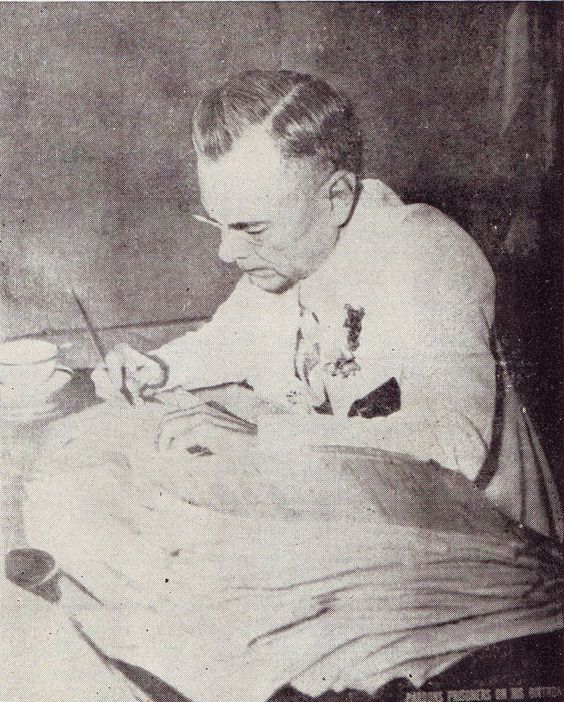 |
| On June 4, 1941, Philippines President Manuel L. Quezon signs into law Commonwealth Act No. 616, known as An Act to Punish Espionage and other offenses against National Security. |
Martin Maryland bombers of the RAF based on Malta bomb and sink Italian freighters Beatrice C and Montello off the coast of Tunisia. Some sources list this incident as having occurred on 3 June.
The Royal Navy sets off another supply mission to Malta. Operation Rocket features aircraft carriers HMS Ark Royal and Furious being escorted by battleship Renown and many other vessels. The plan is to deliver 43 Hawker Hurricane Is to the beleaguered island.
Invasion jitters continue on Malta. Building on lessons learned on Crete, the British emphasize killing or capturing the German paratroopers (fallschirmjäger) upon descent or immediately thereafter, before they can defend themselves. British troops have occupied the island of Gozo, normally left unguarded. Otherwise, it is a quiet day on Malta, with just one Luftwaffe fighter sweep that results in no damage or bombs dropped.
 |
| "On June 4, 1941, RCAF Sergeant E. Romilly, the Royal Australian Air Force’s W. Betts, and the Royal Air Force’s J. Mahoud practice navigation techniques onboard an Anson aircraft at No. 1 Air Navigation School, RCAF Rivers, Manitoba." PHOTO: DND Archives. |
 |
| The Algonquin Regiment leaves Port Arthur, Canada on June 4, 1941 (Thunder Bay Public Library). |
US Military: Chief of Staff of the United States Army George Marshall sends a memo to General Richardson regarding the development of a unit that comes to be composed by men called the Tuskegee Airmen. Marshall writes:
Dr. Patterson, head of Tuskegee Institute, has been doing a very fine thing in assisting the Air Corps in the development of a negro aviation unit. He has been under heavy attack from the Chicago and Harlem elements, and for a time it appeared that they would succeed in emasculating the Tuskegee Air program for national defense.Marshall suggests crafting "a definite program of publicity" to support the program.
Holocaust: The Republic of Croatia orders all Jews to wear a star with the letter Z. The Reich prohibits Jews from using beaches and swimming pools.
 |
| Kaiser Wilhelm II of Germany in exile in Doorn in the Netherlands, 1933 (German Federal Archives, Bild 136-C0804). |
The Dutch government in the past has protected Wilhelm II from prosecution by the Allies by refusing to extradite him as required by Article 227 of the Treaty of Versailles. While a lukewarm supporter of Hitler and his NSDAP party in the 1920s, Wilhelm II soured on them as the 1930s wore on due to their persecution of the Jews. As he stated in December 1938:
For a few months I was inclined to believe in National Socialism. I thought of it as a necessary fever. And I was gratified to see that there were, associated with it for a time, some of the wisest and most outstanding Germans. But these, one by one, he [Hitler] has got rid of or even killed... He has left nothing but a bunch of shirted gangsters!That said, Hitler has used Wilhelm for propaganda purposes at times, including publishing a brief, perfunctory telegram congratulating Hitler on his victory over The Netherlands in 1940. For his part, Hitler for many years has taken a dim view of Wilhelm II, calling him an "idiot" and other disparaging terms.
Hitler makes no plans to attend the funeral and is furious when he learns that the local Wehrmacht commander has provided an honor guard for the funeral procession. Wilhelm is buried in a mausoleum on the grounds of his Doorn home.
American Homefront: The funeral of baseball legend Lou Gehrig takes place at Christ Episcopal Church of Riverdale. His remains are cremated and he is buried at Kensico Cemetery in Valhalla, New York.
"Power Dive," directed by James P. Hogan and starring Richard Arlen, Don Castle and Jean Parker, premieres. A typically short 1940s film (67 minutes) from Pine-Thomas Productions (as Picture Corporation of America), the film features a revolutionary new airplane made of plastic. The film is in the public domain due to the failure of the original copyright holder to renew the film's copyright.
June 1941
June 1, 1941: Farhud Pogrom
June 2, 1941: Massacres on Crete
June 3, 1941: Kandanos Massacre
June 4, 1941: Kaiser Wilhelm Passes Away
June 5, 1941: Death in Chungking
June 6, 1941: Hitler's Commissar Order
June 7, 1941: Commandos Strike at Pessac
June 8, 1941: British Invade Syria and Lebanon
June 9, 1941: Litani River Battle
June 10, 1941: British Take Assab
June 11, 1941: Hitler Thinking Beyond Russia
June 12, 1941: St. James Agreement
June 13, 1941: Lützow Damaged
June 14, 1941: Latvian June Deportations
June 15, 1941: Operation Battleaxe
June 16, 1941: The Old Lion
June 17, 1941: British Spanked in North Africa
June 18, 1941: Turkey Turns Its Back
June 19, 1941: Cheerios Introduced
June 20, 1941: Birth of US Army Air Force
June 21, 1941: Damascus Falls
June 22, 1941: Germany Invades Russia
June 23, 1941: A Soviet KV Tank Causes Havoc
June 24, 1941: Kaunas and Vilnius Fall
June 25, 1941: Finland Declares War
June 26, 1941: Bombing of Kassa
June 27, 1941: Encirclement At Minsk
June 28, 1941: Minsk Falls
June 29, 1941: Brest Fortress Falls
June 30, 1941: Mölders Becomes Top Ace
2020



